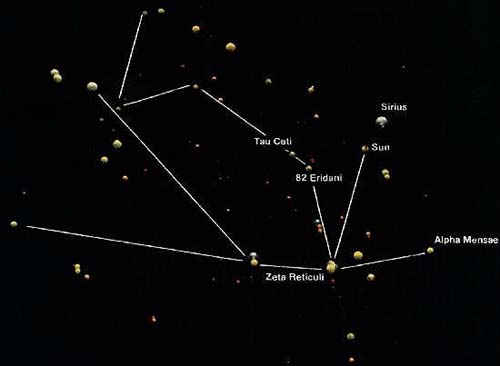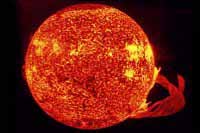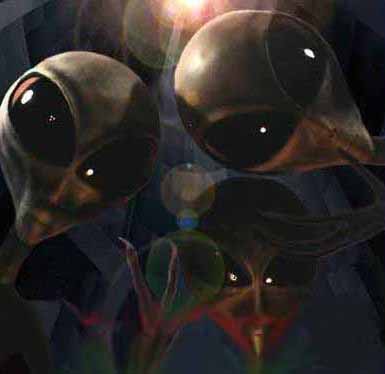Zeti Reticuli


Z�e�t�a� �R�e�t�i�c�u�l�i� �i�s� �a� �b�i�n�a�r�y� �s�t�a�r� �s�y�s�t�e�m� �l�o�c�a�t�e�d� �a�b�o�u�t� �3�9� �l�i�g�h�t� �y�e�a�r�s� �a�w�a�y� �f�r�o�m� �E�a�r�t�h�.� �I�t� �i�s� �l�o�c�a�t�e�d� �i�n� �t�h�e� �c�o�n�s�t�e�l�l�a�t�i�o�n� �R�e�t�i�c�u�l�u�m�,� �a�n�d� �i�s� �v�i�s�i�b�l�e� �t�o� �t�h�e� �u�n�a�i�d�e�d� �e�y�e� �u�n�d�e�r� �v�e�r�y� �d�a�r�k� �s�k�i�e�s�.� �B�e�c�a�u�s�e� �o�f� �t�h�e� �s�o�u�t�h�e�r�l�y� �l�o�c�a�t�i�o�n� �o�f� �t�h�e� �s�y�s�t�e�m�,� �i�t� �i�s� �n�o�t� �v�i�s�i�b�l�e� �n�o�r�t�h� �o�f� �t�h�e� �t�r�o�p�i�c�s�.
Originally thought to be old galactic halo Population II subdwarfs, the two stars are now thought to be younger galactic disk stars, but still considerably older than the Sun, perhaps as much as 8 billion years old. They belong to the Zeta Herculis stellar moving group. Both stars share similar proper motions and distances confirming that they indeed form a wide binary star. The stars are approximately 9,000 AU apart. The stars revolve around each other once in over a million years.
The stars, designated Zeti1 Reticuli and Zeta2 Reticuli, are both yellow dwarf (main sequence) stars remarkably similar to our Sun. No close-in giant planets have been detected around either of the components, making Earth-like terrestrial planets possible. However, the stars are only 60% as enriched with metals as the Sun. Small, terrestrial planets around less metal-rich stars are less likely according to our current knowledge, though gas giant development is not impeded by this.
Zeta1 Reticuli is slightly less massive and luminous than the Sun. Spectral class of the star is G2.5 V.
Zeta2 Reticuli has a very similar mass and luminosity to our Sun. The spectral type of the star is G1 V. The star was suspected to have a close stellar companion, but it was deemed to be an instrument artifact.
On September 20, 1996 an extrasolar planet was announced orbiting the star. The planet would have a short orbit (0.14 AU) and mass of about 27% that of Jupiter. However, the discovery was quickly retracted as the signal was shown to be caused by pulsations of the star.

Zeta Reticuli system has gained significant popularity because of its connection withufology.
It is often alleged that Zeta Reticuli is home to an alien civilization that has been visiting Earth and abducting humans for various reasons, those more commonly referred to as the Greys. This belief stems from the claimed Betty and Barney Hill abduction in 1961. Years later, under hypnosis, Betty Hill drew a star map purported to show the relative positions of the aliens' home star and the Sun.
UFO researcher Marjorie Fish soon claimed that the map indicated Zeta Reticuli as the aliens' home, although sceptics have pointed out that the map is too vague to accurately pinpoint any particular star at all.
In an interview for a television documentary, Bob Lazar, the man who first described Area 51 as a secret UFO research facility, suggested that the UFO which he claimed to have helped reverse-engineer may have come from the vicinity of Zeta Reticuli.
Another theory which involves Zeta Reticuli, is the claim that there was a secret exchange program ("Project Serpo") of 12 men from Earth traveling to Serpo, allegedly a planet in Zeta Reticuli.
No comments:
Post a Comment